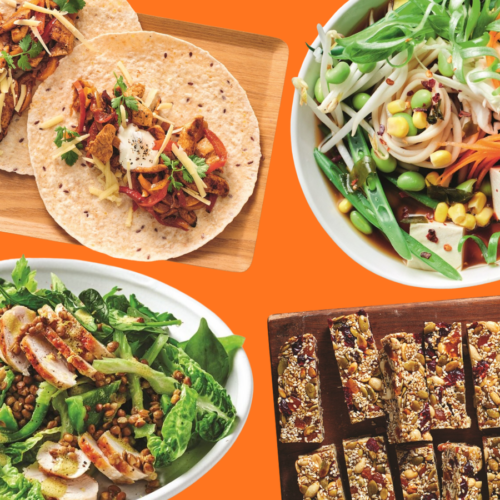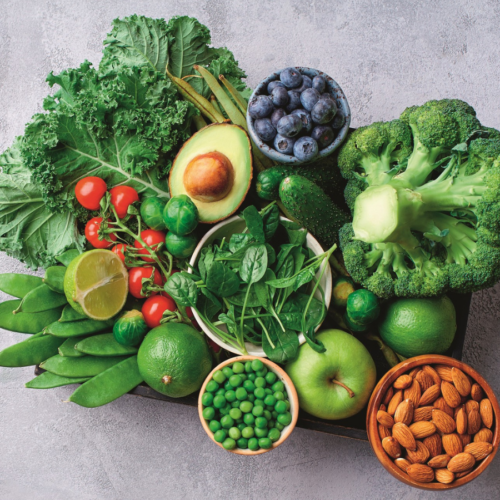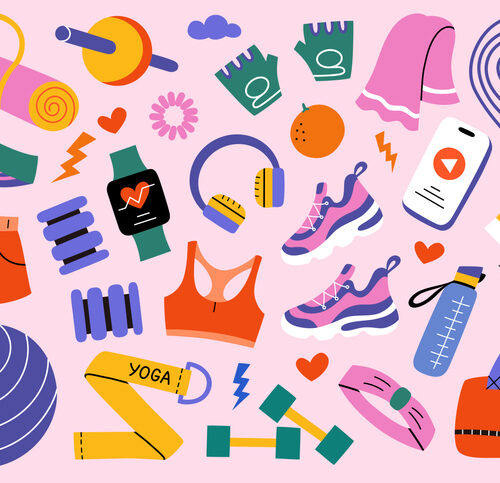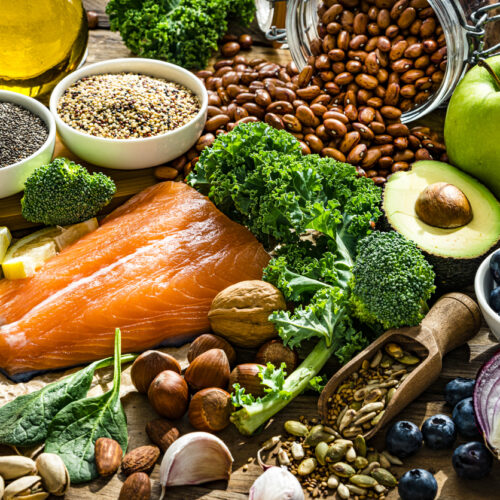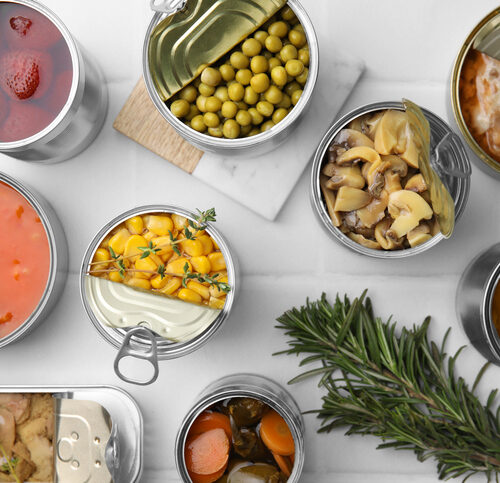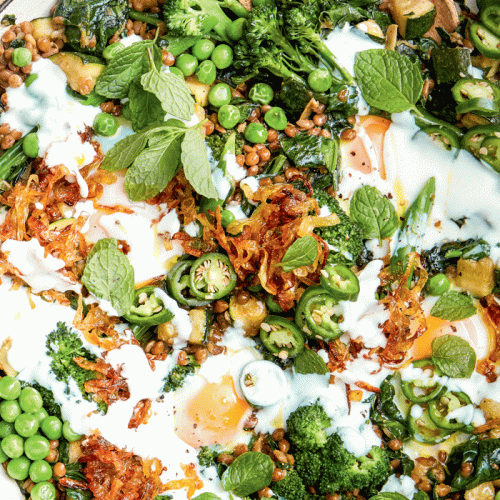
Food packaging labels can be a small-print minefield of numbers, nutrients and ingredients. But fear not as HFG helps you decode them!
You’re standing in the supermarket aisle looking for a wholegrain loaf of bread. There are 12 types staring back at you and you have no idea which one to choose. Sound familiar? It’s common to feel overwhelmed by all the options on offer, but checking out the labels on packaging will turn you into a discerning shopper, so you can choose the healthiest foods for your family. To make life easier, follow our guide to reading these labels.
Your 3-step guide to savvy shopping
Next time you hit the shops, remember to:
Step 1: Check front-of-pack claims
Manufacturers often use clever wording like ‘low in salt’ and ‘97% fat free’, but there are lots of rules surrounding nutrition claims. For instance, a ‘low-salt’ food must have no more than 120mg of sodium per 100g. A food claiming to be ‘97% fat free’ must have a maximum of three per cent fat. It really means the same thing, but of course the reverse sounds better! You can verify these claims by reading the nutrition information panel on the back of food products.
Step 2: Scan the ingredients list
Ingredients used in products are listed in descending order by weight, from the largest to the smallest. Pay particular attention to the first three ingredients. If they include some form of sugar, fat or flour, the food is unlikely to be healthy – as is the case with most muffins, biscuits and snack foods. Don’t forget that these ingredients can also appear under other names (see below).
If an ingredient is part of a food’s brand name or is pictured on the front of its packaging, it will be shown as a percentage in the ingredients list, and you’ll soon discover just how much is in the product. Some brands of almond milk biscuits, for example, contain a paltry two per cent of almonds in them, while sugar is listed higher in the ingredients list.
Fats in disguise:
- oil
- coconut oil
- shortening
- triglycerides
- diglycerides
Sugars in disguise
- sucrose
- fructose
- glucose
- maple syrup
- rice malt syrup
- honey
Salt in disguise
- kosher salt
- vegetable salt
- sea salt
- sodium bicarbonate
- monosodium glutamate (MSG)
- stock
- soy sauce
Step 3: Compare nutrition panels
At the top of all nutrition panels will be the serving size, which has been set by the manufacturer. This must be defined, for example, ‘per 75g serve’ or ‘per half a cup serve’, along with the number of serves you’ll get from the whole package.
- The ‘per serve’ column is handy for estimating how much you should eat. You can quickly see how much fat, fibre, sodium or kilojoules (calories) you’re getting from one serve. This may influence how much – or how little – of a serve you want to eat.
- The ‘per 100g’ column – which is next to the ‘per serve’ column – is the most important column. That’s because serving sizes can vary dramatically between brands of the same product, but the 100g benchmark never changes. The per 100g column is really handy for comparing similar products. For instance, which stock has the least sodium per 100g? Which cereal has the most fibre per 100g?
Remember to check the serving size, too. Some food products look like they’re a single serve when they’re really meant to be two serves or more!
Label reading cheat sheet
For any packaged food product you choose, the health guidelines to aim for are:
- Less than 10g fat per 100g
- Less than 15g sugar per 100g
- Less than 120mg sodium per 100g
What about the Health Star Rating?
This Australian government health initiative ranks products on a scale from half a star to five stars. Foods with five stars are the best nutrition choice. More than 4000 packaged food products carry these stars.
The ranking is worked out from an algorithm based on kilojoules, plus three ‘negative’ nutrients: saturated fat, sugars and sodium. This is counterbalanced against protein, fibre and the content of fruit, vegies, nuts and legumes.
The Health Star Rating is designed to help you quickly work out the healthier packaged foods to buy. Use it to compare similar products, such as two breakfast cereals or two muesli bars. The stars are used only for manufactured foods – not fresh foods.
Label-reading traps
Discounts, two-for-one deals and marketing hype can all encourage unhealthy in-store buys. Here are four common traps and ways to avoid them.
Trap 1: Believing ‘no-added-sugar’ claims
Sugar may not have been added to the product, but that doesn’t mean the product is sugar-free. Maple syrup, rice malt syrup, honey and fruit juices all have a high natural sugar content, so check the nutritional information panel to see if these ingredients are listed.
Rule of thumb: If a product tastes sweet, that sensation on your tongue is generally due to some type of sugar.
Trap 2: Ignoring serving sizes
When you’re pouring straight from the box or snacking straight out the pack, it’s easy to ignore the manufacturer’s serving size suggestion. However, you could be consuming twice the recommended serve!
Remember that serving sizes can vary greatly, even within brands, so check out how much the serving size is the first time you try a new product.
Rule of thumb: Use small cups, plates and bowls to help reduce your portions.
Trap 3: Falling for ‘health halo’ claims
Claims like ‘natural’, ‘real’ or ‘with antioxidants’ cannot be defined and are very subjective. They can be a sneaky way of making you assume a product is healthy when it’s not.
A chocolate bar rich in antioxidants will still contain a lot of fat, sugar and kilojoules, so it doesn’t match the health benefits you get from eating fruit and vegetables. If it sounds too good to be true, it probably is!
Rule of thumb: Approach these products with a sceptical eye and always check the ingredients list.
Trap 4: Thinking ‘vegan’ means healthy
It’s natural to be attracted to the latest food trend of the moment, but just because a product is labelled vegan does not necessarily mean it’s better for you. Chips, sweets and meat-free bacon can be classified as vegan, yet are all highly processed with few nutrients. It pays to be a tad sceptical.
Rule of thumb: Base your core diet on minimally processed whole foods, such as fresh fruit, vegetables, whole grains, legumes, nuts and seeds.
www.healthyfood.com



